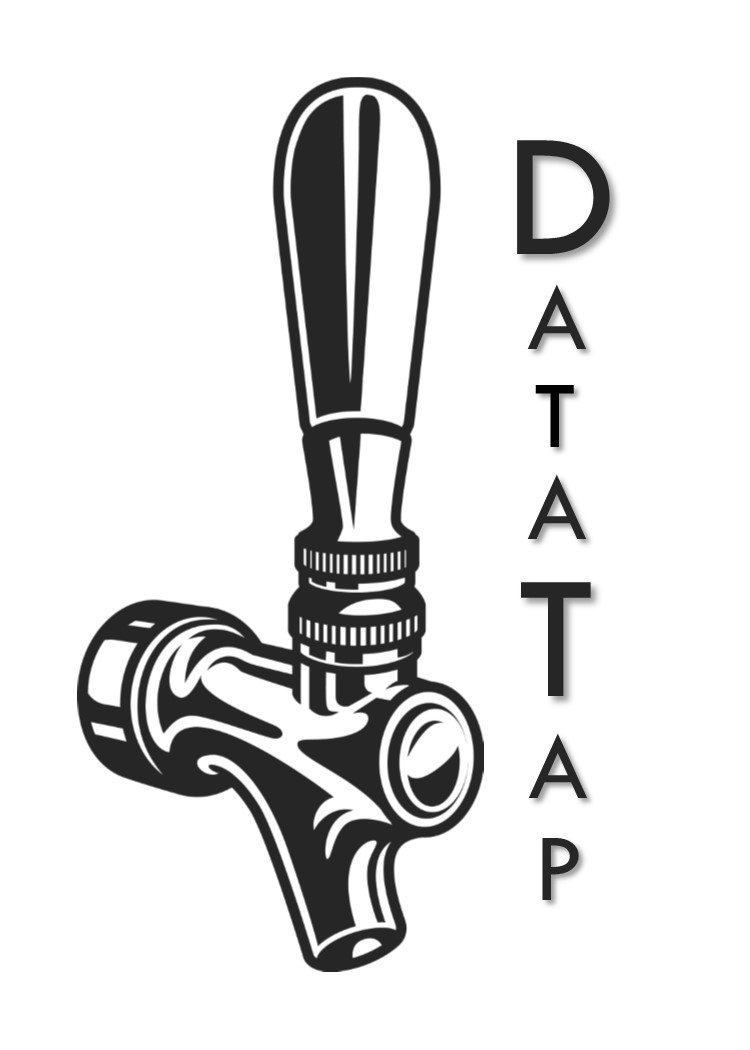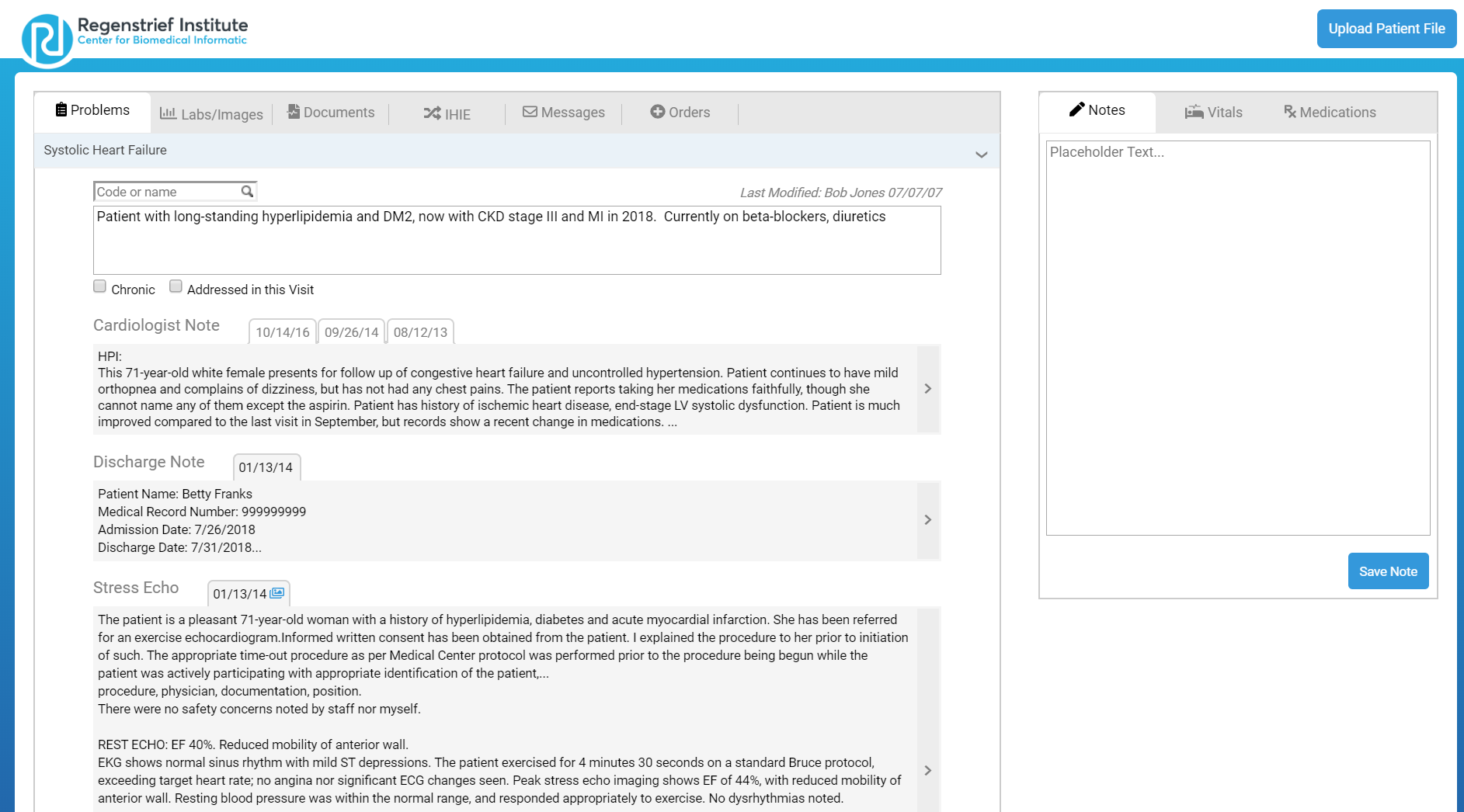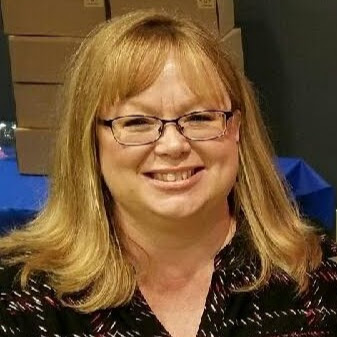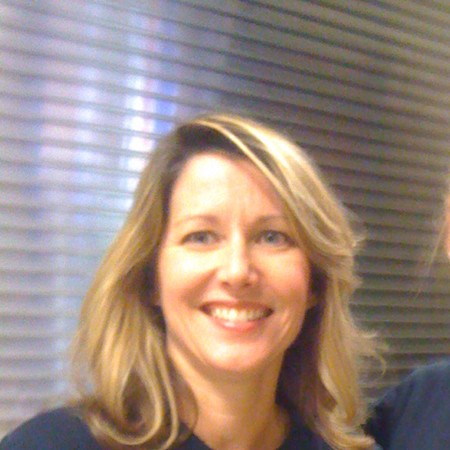DataTap: The data you need at the moment of care
DataTap integrates relevant patient information into the problem list for rapid processing and decision-making by the clinician. This reduces burnout while enhancing safety and efficiency.
Indianapolis, IN United States For the Doctors Office Informatics Patient and Provider Tools AMIA2019 challengeAbout our project

The problem we solve: For every hour seeing patients, clinicians spend about an hour looking for information in the chart. The inefficiency of the EHR is burning out clinicians. Current problem lists are cluttered, out-of-date, and static. Important conditions are missing from the problem list 30-50% of the time, leading to low usage. Clinical data is scattered throughout an electronic chart, and 40% of patients use more than one hospital system further compounding the problem. Clinicians often give up before finding all the information they need. We need a tool to bring relevant data together where clinicians can view it easily and act on it at the moment of care.

About our solution: Our solution gathers all available patient data and creates a problem list for the patient. Relevant collected data (labs, notes, and prescription information) is displayed neatly together with the corresponding problem, allowing for rapid visual consumption. Making the problem list useful incentivizes clinicians to maintain its accuracy. To illustrate the power of this tool let's imagine a hospital with 200 physicians. Each physician spends 20 hours per week seeing patients, this would mean that each physician also spends at least 20 hours per week looking for information in the EHR (that is 4,000 hours per week of searching by all physicians). Using DataTap can reduce the amount of time searching in the EHR by up to 70%. There are over 1 million physicians in the US, meaning that not using our solution wastes thousands of hours each day. Having the most relevant information at your fingertips reduces the time spent on searching.
Progress to date:
DataTap is a supercharged, terminology-driven version of CareView (formerly FHIR HIEdrant). Our research and development showed that clinicians want a quick way to find patient data within their workflow. A cross-sectional survey demonstrated that the information desired depended on the circumstance. With this in mind, we built a prototype of DataTap and piloted it with clinicians in several specialties. The basic prototype can integrate outside clinical data using the FHIR standard, and organizes the data based on medical terminology mapping developed by Intelligent Medical Objects. Since DataTap uses a terminology-driven approach of organizing data it can be used for thousands of diagnoses! Response from clinicians using the prototype was very enthusiastic and want this product in their clinics.
About Our Team

Creator: Titus Schleyer
Location: Indiana
Bio: Dr. Titus Schleyer has been active in biomedical informatics research since 1989, conducting seminal research on electronic dental records and Internet applications, and workflow and human-computer interaction in dentistry. Dr. Schleyer founded the Department of Dental Informatics at Temple University, as well as the Center for Dental Informatics at the University of Pittsburgh. Primarily funded by the National Institutes of Health, Dr. Schleyer’s current research is focused on making information from various sources more accessible in clinicians’ workflows, big data analytics for population health management and research, and development of the Indiana Learning Health Systems Initiative. He co-directs (with Dr. Brian Dixon) the National Library of Medicine-funded Public & Population Health Informatics (PHI) Fellowship at Indiana University. Dr. Schleyer holds DMD and PhD degrees from Goethe University in Frankfurt, Germany, a DMD degree from Temple University, Philadelphia, and an MBA degree in Health Administration from Temple University.
Hospital Affiliation: IU Health, Indiana University School of Medicine
Title: Research Scientist
Advanced Degree(s): DMD, PhD
About Team Members
Bryan McConomy
Informatics Fellow, MD
Biography: I trained in Internal Medicine and practiced as a hospitalist for a few years at the University ofIowa. I always felt that the EHR is not utilized properly to help clinicians spend more time with patients and enable the clinician to make the best decision with best available evidence. I plan to continue to study how we can make the EHR a better tool for clinicians and not a barrier to patient care.
Title: Informatics Fellow
Advanced Degree(s): MD
LinkedIn:
https://www.linkedin.com/in/bryan-mcconomy-31368a70/
Eric Puster
Informatics Fellow, DO
Biography: A computer engineer and pediatrician by training, I am always looking for ways in which computers and physicians can work together to improve the care of our patients. My most intense focus is on how the display of information influences patient care, and how to make this work to the clinician's benefit.
Title: Informatics Fellow
Advanced Degree(s): DO
LinkedIn:
https://www.linkedin.com/in/eric-puster-960b1617/
About Our Company
Regenstrief Institute
Location: 1101 West 10th St
Indianapolis, IN 46202
US
Founded: 1969
Website: https://www.regenstrief.org/
Twitter: @Regenstrief
Facebook: https://www.facebook.com/regenstriefinstitute/
Other link: https://www.regenstrief.org/
Product Stage: Prototype/MVP
Employees: 200+
How We Help Patients
When accurate, actionable and digestible information is presented to physicians, patients can experience an improved patient-physician interaction and safer care can be delivered. In a study of patients with systolic heart failure, the mere fact of having the diagnosis in the problem list was associated with increased adherence to guideline based medical therapies. Physicians spend more time hunting for information with copious amounts of clicking leading to information overload and wasted time. Delivering the right information at the right time will lead to better outcomes.
How We Help Physicians
DataTap integrates, organizes and presents relevant patient information to the clinician based on the clinical condition specific to the patient’s problem list. Clinicians must sort through more data than ever before, and the problem is further compounded by the need to navigate to multiple sections of the electronic chart and even outside systems to find information. Notes in particular have become bloated, and scrolling through them wastes precious time. DataTap can place the pertinent notes, labs, objective vital signs, imaging data, medication data, etc for conditions such as diabetes, heart failure, hypertension, and chronic kidney disease to only name a few.
How We Help Hospitals
Using DataTap to improve functionality of the problem list can help hospitals in multiple facets. We can help fight burnout by reducing data search time by up to 70% which increases face time with the patient. Billing reconciliation will be simplified with an up-to-date problem list, registries will be more complete, and predictive analytics will increase their yield with the use of DataTap.
How We Help Partners
The principal benefit for all parties is being first to market for a groundbreaking product that has the potential to impact care across the globe. Inclusion of information exchange data exemplifies the value of organizations like IHIE, spurring on their growth. IMO will diversify their portfolio by entering the clinical decision support market and will increase the reach of their terminology. IU Health will have the opportunity to shape the product and accrue its benefits with minimal investment of capital funds.
Challenge Mission
Affiliation(s)
- Dr. Titus Schleyer, DMD, PhD is a Research Scientist at the Regenstrief Insitute, Director of Learning Health Systems at IU Health and a Professor of Medicine with the Indiana University School of Medicine.
- Dr. Todd saxton, Vice President of Business Development at Regenstrief, is also a professor at the IU Kelley School of Business, with access to business student teams to test the concept and develop the business model.
- Dr. Eric Puster, DO is a 2nd year Informatics Fellow at Regenstrief Institute.
- Dr. Bryan McConomy, MD is a 1st year Informatics Fellow at Regenstrief Institute.
Key Milestones Achieved and Planned
- Q1 2020 - Building the platform
- Q2 2020 - Non-production quantitative testing
- Q4 2020 - Limited roll-out in partner sites
- Q3 2021 - Begin offerings beyond partner institutions
Our Competitive Advantages
A literature review was conducted to find articles, conferences, and posters that outline competing products that cover our chosen problem area. The search of PubMed, Google Scholar, CINAHL, and Scopus databases revealed two research projects that were similar to the proposed application, one at the Department of Biomedical Informatics at the University of Utah and the other one at IBM Research. The IBM research team has a patent application pending with claims to provide a service similar to that of our product. Ways to differentiate our product and methods used to measure problem list success are discussed. A request for information from the American College of Medical Informatics was also conducted and no competitors were indicated in the responses we received.
Barriers to Entry
Currently, there is no product in place in this market. As such, EHR vendors will provide the most significant barrier. We will work within the constraints of these vendors to supply a solution which does not violate their policies. A second barrier will be demonstrating the worth of the product to the customer, though our initial demonstrations seem to show that customers are looking for this product.
Funding, Partners and Alliances To Date
This project is currently unfunded, but has significant support from partner institutions. IU Health, an academic medical institution with over 1500 physicians has signed on to the project, and Eskenazi Health, with over 500 physicians, has showed significant interest. Leap of Faith Foundation has committed to provide the terminology support through an MOU process and Indiana Health Information Exchange is a long-standing partner with the largest and most successful health information exchange in the country.
Revenue
This project has developed no revenues up until the current time. The price of the product has not yet been determined, as the benefit has not yet been measured. By the end of 2022, with perhaps a dozen clients participating, we expect gross revenues to exceed $1 million annually.
Innovation Details
Intellectual Property Summary
It is currently an invention disclosure at Indiana University.
Clinical Information
At the moment, we do not have studies about our prototype. However, the inception of the problem list decades ago showed that a problem-oriented workflow leads to better decision making. Further, studies show that focused dashboards can reduce the time it takes to prepare for a patient by up to 70%, and that there is broad-based support for dashboards.
Regulatory Status
As a device intended to retrieve information and organize it for display, this software does not qualify as a Software as a Medical Device and does not require FDA approval.
How we will use the funds raised
Funds are are to be used to further develop and enhance the user experience, refine data extraction, and support validation in the clinical setting. Funding is also critical to market the product to potential customers.
Thank You
The EHR must be available to help to the clinician, not be a barrier. DataTap can put the right information in front of the right clinician at the right time. Support us and be part of a ground-breaking solution that will positively impact patients and clinicians!
Updates
-
Update #1
DataTap invited to compete for Technology Enhancement Funding
Last week, Dr. Eric Puster presented for Technology Enhancement Funding at the Indiana Center for Biomedical Innovation (https://www.in-bioinnovation.org/). Fingers crossed for a possible award!
Supporters
-

09/27/2020 - Liked the project.
11/10/2019 - Followed the project.
11/10/2019 - Liked the project.
11/09/2019 - Liked the project.
11/06/2019 - Liked the project.
11/06/2019 - Followed the project.
11/05/2019 - Followed the project.
11/05/2019 - Liked the project.
11/05/2019 - Liked the project.
11/05/2019 - Liked the project.
11/05/2019 - Followed the project.
11/05/2019 - Liked the project.
11/05/2019 - Followed the project.
11/05/2019 - Liked the project.
11/05/2019 - Followed the project.
11/05/2019 - Liked the project.
11/05/2019 - Liked the project.
11/05/2019 - Followed the project.
11/04/2019 - Followed the project.
11/04/2019 - Liked the project.
11/04/2019 - Followed the project.
11/04/2019 - Followed the project.
11/04/2019 - Followed the project.
11/04/2019 - Liked the project.
11/04/2019 - Followed the project.
11/04/2019 - Liked the project.
11/04/2019 - Liked the project.
11/04/2019 - Liked the project.
11/04/2019 - Followed the project.
11/04/2019 - Liked the project.
11/04/2019 - Liked the project.
11/04/2019 - Followed the project.
11/04/2019 - Followed the project.
11/04/2019 - Followed the project.
11/04/2019 - Liked the project.
11/04/2019 - Liked the project.
11/04/2019 - Followed the project.
11/04/2019 - Followed the project.
11/04/2019 - Followed the project.
11/04/2019 - Liked the project.
11/04/2019 - Followed the project.
11/04/2019 - Followed the project.
11/04/2019 - Liked the project.
11/04/2019 - Followed the project.
11/04/2019 - Liked the project.
11/04/2019 - Followed the project.
11/04/2019 - Followed the project.
11/04/2019 - Liked the project. , MS, RDN, LDN
, MS, RDN, LDN
11/03/2019 - Followed the project. , MS, RDN, LDN
, MS, RDN, LDN
11/03/2019 - Liked the project.
11/03/2019 - Liked the project.
11/03/2019 - Followed the project.
11/03/2019 - Followed the project.
11/03/2019 - Liked the project.
11/03/2019 - Followed the project.
11/03/2019 - Liked the project.
11/03/2019 - Liked the project.
11/02/2019 - Liked the project.
11/02/2019 - Followed the project.
11/01/2019 - Liked the project.
11/01/2019 - Liked the project.
11/01/2019 - Followed the project.
11/01/2019 - Liked the project.
11/01/2019 - Followed the project.
11/01/2019 - Liked the project.
11/01/2019 - Followed the project.
10/31/2019 - Liked the project.
10/31/2019 - Followed the project.
10/31/2019 - Liked the project.
10/31/2019 - Liked the project.
10/31/2019 - Liked the project.
10/31/2019 - Followed the project.
10/31/2019 - Followed the project.
10/31/2019 - Liked the project.
10/30/2019 - Liked the project.
10/30/2019 - Followed the project.
10/30/2019 - Followed the project. , MS
, MS
10/30/2019 - Followed the project. , MS
, MS
10/30/2019 - Liked the project.
10/30/2019 - Liked the project.
10/30/2019 - Followed the project.
10/30/2019 - Liked the project.
10/30/2019 - Liked the project.
10/30/2019 - Interested in investing in the project.
10/30/2019 - Followed the project.
10/30/2019 - Liked the project.
10/30/2019 - Liked the project.
10/30/2019 - Liked the project.
10/30/2019 - Followed the project.
10/30/2019 - Liked the project.
10/30/2019 - Liked the project.
10/30/2019 - Liked the project.
10/29/2019 - Liked the project.
10/29/2019 - Followed the project.
10/29/2019 - Liked the project.
10/29/2019 - Liked the project.
10/29/2019 - Followed the project.
10/29/2019 - Liked the project.
10/29/2019 - Followed the project.
10/29/2019 - Liked the project.
10/29/2019 - Followed the project.
10/29/2019 - Followed the project.





